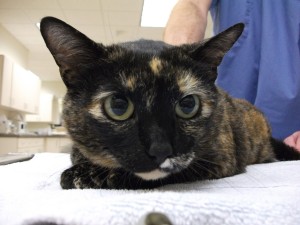Those of us who work in the health IT world spend our days analyzing policies, creating advocacy strategies, and talking about meaningful use criteria, quality improvement, and care coordination till we’re blue in the face. But how does that play out when we leave the office? More often than not, we bring our work home.
I am the sole caregiver to Lorelai and a member of Betty’s1 care team. I have been in the caretaking role with both Lorelai and Betty for about five years. Really, I’m the secondary caregiver to Betty — if the primary caregiver is unavailable for any given reason, the job falls to me.
Lorelai and Betty have similar health histories. Both have chronic conditions that require them to take a variety of medications on a specific schedule. Both experience side effects from their respective medications that require monitoring and management. Both have dietary restrictions and weight management issues that negatively affect their health. And most importantly, neither is able to speak for herself and represent herself during encounters with the health care system.
Three years ago, I took Lorelai to a new primary care provider, who was great. What really amazed me though, was the online patient portal that the office provided. Not only did the office staff tell me about it when I was filling out paperwork, but they immediately sent me an email with the link to the portal and a more detailed explanation of the portal’s services. The portal was private and secure and would help me manage Lorelai’s health by allowing me to view and download her health records, request an appointment, refill her prescriptions, search the practice’s extensive health library, and access both her medication schedule and vaccination history. What’s more, the portal was bi-directional, meaning that I could edit any incorrect information, upload a picture of Lorelai so the staff could recognize her and correctly identify her, and email myself medication reminders.
Now let’s compare Betty’s situation at that same point in time. Though Betty sees a variety of health care providers, three years ago, none of them had online patient portals. Betty, her primary caregiver, and I had to keep track of her medications on a piece of paper. I can’t tell you how many times we argued with her doctors because her prescriptions were sent incorrectly or weren’t ready when she needed them. When Betty got hit by a car and broke her leg, the ER didn’t notify her primary care provider — we did. And when Betty needed to travel internationally and wanted to bring a copy of her medical records with her in case of an emergency, her doctors resisted so vehemently and took so long to comply that we had to pick up the records on our way to the airport.
Now here’s the kicker: Betty is my grandmother. Lorelai is my cat.
Three years ago, my cat’s veterinarian offered a secure online portal that made my role as the person responsible for her health easier. However, none of the providers treating my 80-something year old grandmother, who doesn’t speak English and is fully dependent on our family, provided that convenience.
Luckily, meaningful use is changing all of that. Since my grandmother is a Medicare recipient, my father and I were able — with my grandmother’s permission — to download her health records and print a copy for my grandmother in case she has a medical emergency and goes to the hospital without us. Over Christmas break, we downloaded the iBlueButton app that allowed my father and me to have my grandmother’s medical records and medication schedule on our smartphones in a clear, organized fashion. And since my grandmother’s prescriptions are now filled electronically, we no longer have screaming matches with her doctors or pharmacists — a relief for all parties involved.
We’re all caregivers — we take care of our parents, grandparents, siblings, significant others, friends, pets, and — let’s not forget — ourselves. And we’re all busy and we’re all human — we forget things, we get overwhelmed, and we make mistakes. Meaningful use is helping to make being a caregiver more manageable and easier. The health care system should afford the same benefits to my grandmother and me as it does to my cat, and now, thanks to meaningful use, it finally is.
1 Names have been changed.
This was originally published at From the Desk Of..., blog of the National Partnership for Women and Families.



The views and opinions expressed in this post are those of the author(s) and do not necessarily reflect those of MomsRising.org.
MomsRising.org strongly encourages our readers to post comments in response to blog posts. We value diversity of opinions and perspectives. Our goals for this space are to be educational, thought-provoking, and respectful. So we actively moderate comments and we reserve the right to edit or remove comments that undermine these goals. Thanks!